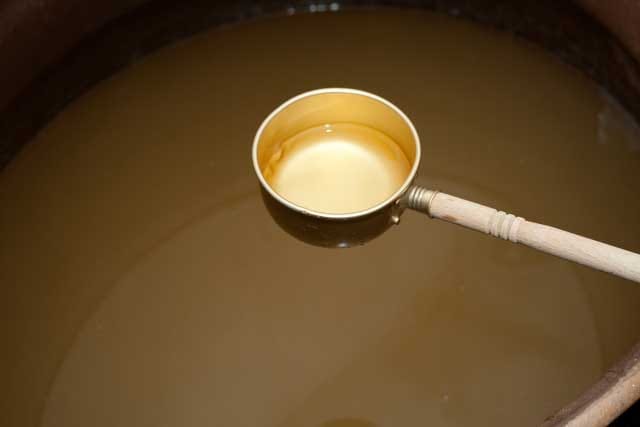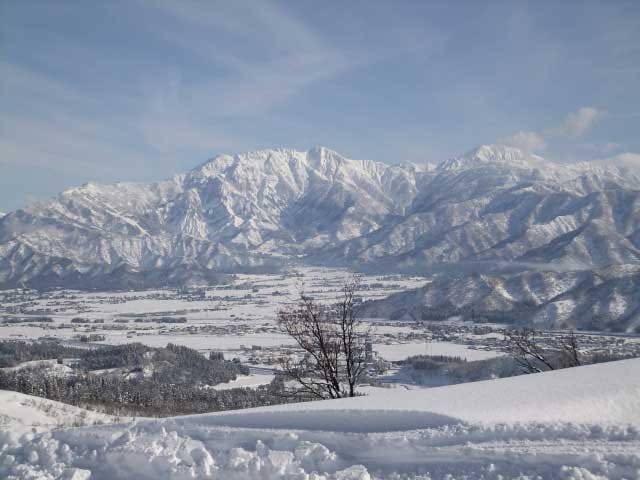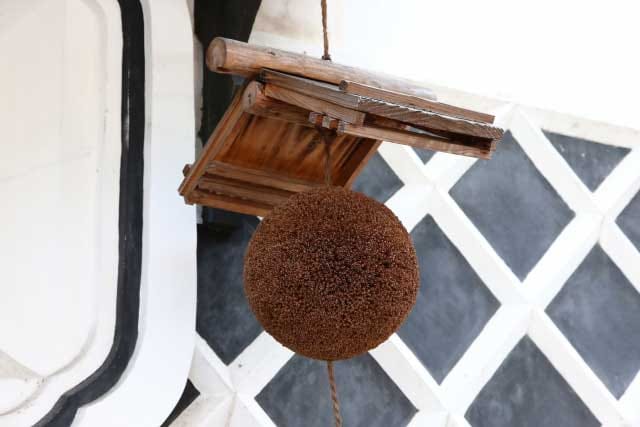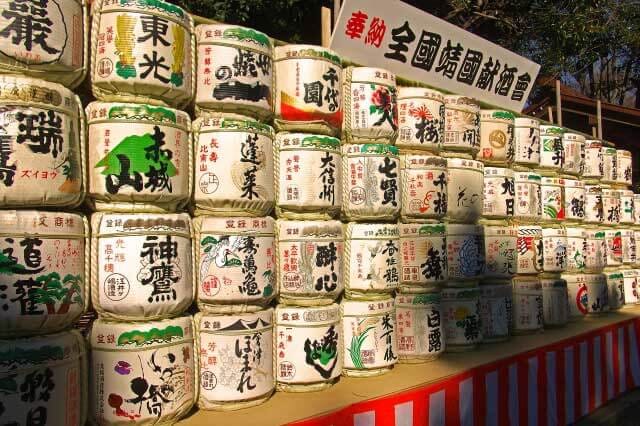What is the charm of aging old sake? A thorough explanation of aging old sake!

This article is a commentary on aged sake, a genre of sake. For those who are not very interested in Japanese sake, I think that aged old sake is unfamiliar. In this article, we will introduce you to what aged old sake is and what it has to offer, so please check it out.
What is aging old sake?
There is no clear definition of aged used sake, but the Long-Term Aged Sake Study Group defines it as “Sake excluding sugar-added sake that has been aged in Kuramoto for over 3 years”. Old sake in Japanese sake refers to those made before that year, but by aging and heading, it is a sake that has matured more than ordinary old sake.
Aged old sake is not a specific name such as pure rice sake or ginjo sake. For this reason, there is no label notation such as “Aged Old Sake” on the product, and it is difficult to determine which is the Aged Old Sake.
There are some sakes written in the world, such as “Aged Sake” and “Long-Term Aged”, but these are not always aged old sake. Therefore, if you want to drink aged old sake, we recommend that you buy it after confirming with the shopkeeper.
History of aging old sake

Here is a brief introduction to the history of aging old sake. What is the history behind the birth of aging old sake?
Has aging old sake been from the Kamakura period?
It is not certain when the aged old sake was born, but since the aged old sake appeared in the ancient documents of the Kamakura era, the theory that the aged old sake had existed at least in the Kamakura era Has become influential.
Judging from the old documents, it can be seen that matured sake was treated as valuable from that time. Aged old sake is still expensive, so it seems that this is the same as it was in the past.
Nine years sake
Nine years sake is thought to be sake that has been aged for nine years from its name. In the Edo period, the finest sake was thought to be nine years sake. Nine years sake is traded at a price about 2 to 3 times that of ordinary Japan at that time, and it can be seen that it was a rare sake that could rarely be drunk.
Even now, nine-year liquor is used for the wedding ceremony of the imperial family. The number 9 is the largest odd number and a congratulatory number, and nine-year sake is often used for celebrations both in the Edo period and in the modern era.
Why did nine years sake decline?
From the Edo period to the early Meiji era, nine years sake was a familiar drink for the common people. But now there is almost no opportunity to drink nine years of sake, and it is hardly made. Why has nine years of sake declined?
One of the major reasons why nine-year liquor has declined is the “stone-making tax”. During the Meiji period, the government was struggling to collect taxes and imposed heavy taxes with liquor tax as the main source of revenue. One of them was the “stone-making tax”, a heavy tax that was taxed at the moment of squeezing sake.
Therefore, when aging sake in a brewery, you must first pay a “stone-making tax”, and many brewers have stopped producing aged sake.
The “stone-making tax” was abolished after the war, but the culture of aged sake, including nine-year sake, has not yet been restored.
Charm of aging old sake

What is the appeal of aging old sake? From here, we will introduce the features of 2 as the appeal of aging old sake.
Charm of aged old sake ①: Deep taste
The first attraction of aged sake is that it is a delicious sake. Aged old sake can be said to have a well-balanced taste such as “sweetness” and “acidity”. Therefore, you can enjoy various taste changes after putting it in your mouth.
It can be said that the great appeal of aged old sake is that it has a soft taste and you can fully enjoy the sharpness and sweet smell unique to sake.
Charm of aging old sake ②: Hard to get a hangover
Aged old sake is said to be less prone to hangovers. The reason for this is that aged old sake is more bound to alcohol water than ordinary sake and can be broken down in the body while maintaining its frequency.
Aged liquor also has good wake-up after drinking, and is characterized by the ability to prevent hangover.
Charm of aging old sake ③: Beautiful color
Aged old sake is liquor that can be enjoyed by the eyes. Aged used liquor varies in variety from light golden to dark blue and dark red like ruby, depending on how it is made and matured. The sparkling appearance in the glass is truly unique to aging old sake.
It can be said that the appeal of aging sake is not only the taste but also the appearance.
How to enjoy aged old sake
There aren't many people who usually drink aged sake. From here, we will introduce 3 as a point to enjoy aged used sake for the first time drinking aged used sake. If you drink aged old sake, please try it.
Optimal temperature
Aged old sake is classified into 3 types of light, intermediate, and deep ripening depending on the method of making and aging temperature. There is an optimum temperature for each drink, so you can enjoy the aged used sake to the fullest by drinking it at a suitable temperature.
The light-ripening type retains the characteristics of Ginjo sake, so it is said that the optimum temperature is from 10 to 15.
The intermediate type and the deep-ripening type are basically recommended at room temperature, but you can drink deliciously even if it is warmed a little. Therefore, let's change the way of drinking flexibly according to personal taste and individuality of the aging old sake.
The best liquor
Aged old sake can change its taste just by changing the sake bottle. There are various kinds of sake cups, cups, wine glasses, etc. The most recommended is the wine glass.
By making the sake cup into a wine glass, you can check the color gloss unique to aged old sake and enjoy a rich and rich aroma. Please try to use wine glasses when you drink aged sake.
Various ways to drink
Aged old sake is usually drunk as it is, but it can also be drunk with soda and cocktails. For this reason, finding your favorite way of drinking is one way to enjoy aged sake.
If you change the way you drink, be sure to take advantage of the color and taste of aged old sake. Otherwise ordinary sake will be good, so let's take a drink that makes use of the aged old sake.
Can aging old sake be at home?
If you purchase commercial aged sake, it will be more expensive than ordinary sake. For this reason, there are many people who have not been able to get out of aged sake. Aged old sake can be made at home if you observe some precautions. From here, we will introduce how to make aged old sake at home.
Decide the type of sake
The type of old sake produced depends on the type of sake. When pure rice liquor or brewed sake is aged, it becomes a deeply aged type, and when it is aged, it becomes a lightly aged type.
Also, when making aged liquor at home, avoid hot sake and choose hot sake. Furthermore, it is recommended that you can enjoy a lot of taste changes with a slightly sweet and sour taste.
Store with care for ultraviolet rays
Since UV rays are harmful to alcohol, care must be taken to avoid exposure to UV rays during storage. When storing, wrap it in newspaper and store it upright. Don't forget to make a note of when you start ripening on the newspaper.
Newspaper is not only light-shielding, but also excellent in terms of heat retention and moisture absorption, so it is an item you should definitely use when making aged sake.
Per type! What is the best storage location? How about drinking it?
The optimal storage location varies depending on the type of sake.
In the case of pure rice liquor or brewed sake (dense type), a place that is not exposed to UV light at room temperature storage is optimal.
In the case of Daiginjo sake or Ginjo sake (light-ripening type), store it in the refrigerator (place of about 4 degree) for the first year, and in the place of 15 to 18 degree after one year. .
Pure rice liquor and brewed sake (deep ripening type) generally stop deteriorating in about 3 years, and it is said that from 7 years to 8 years. The main feature is that you can enjoy the color change depending on the aging period.
Daiginjo sake and Ginjo sake (lightly ripened type) are said to be drinkable in about 12 and 13 years after aging. There is not much color change even after aging.
It takes time, but the aged liquor you made is exceptional. Please make my aging old sake.
Summary

This time I wrote an article on the theme of the appeal of aged old sake. Aged old sake is sake that has been aged for more than 3 years, and its taste and color change significantly compared to those that have not been aged. Aged old sake can be made at home, so if you are interested, please try it.
